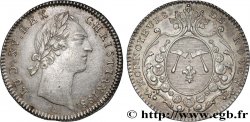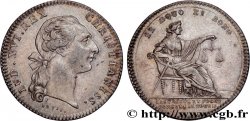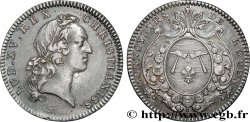fjt_072807 - MONNAIE ET MONNAYEURS DE ROUEN Prieurs et juges-consuls de Rouen (Louis XIV), hybride 1711/1712
недоступный.
Товар уже продан в нашем интернет-магазине
Цена: : 75.00 €
Товар уже продан в нашем интернет-магазине
Цена: : 75.00 €
Тип Prieurs et juges-consuls de Rouen (Louis XIV), hybride
Дата: 1711/1712
Металл: silver
Диаметр: 31 mm
Ориентация осей монеты: 6 h.
Вес: 11,12 g.
Век: cannelée
Редкость: R2
Комментарии о состоянии
Usure régulière sur les reliefs avec de petites marques de manipulation dans les champs. Très bel exemplaire avec une belle patine grise
Ссылки в каталоге: :
Лицевая сторона
Аверс: легенда: LUD MAG ÆQUUS - MONETÆ ARBITER.
Аверс: описание: Tête laurée à droite de Louis XIV [n° 250] ; sous le buste signature R et 1711.
Аверс: перевод: (Louis XIV, juste arbitre de la monnaie).
Обратная сторона
Реверс: легенда: EX ÆQVO - ET BONO ; À L'EXERGUE EN TROIS LIGNES : LES PRIEUR ET IUGES/ CONSULS DE ROUEN/ 1712..
Реверс: Описание: La Justice assise à gauche, une balance dans la main droite et un rameau dans la main gauche.
Реверс: перевод: (Par l'équité et par le bien).
Комментарий
Coin de droit destiné aux jetons de la Monnaie (Feuardent 6278). Jérôme Roussel, qui a gravé ce jeton, est né en 1663 et décédé en 1713. Auteur de nombreuses médailles et jetons, il a commencé à travailler pour la Monnaie des Médailles en 1686. Il est aussi célèbre pour avoir réalisé en 1711 une série de soixante jetons inspirée des métamorphoses d’Ovide.








 Cообщить об ошибке
Cообщить об ошибке Распечатать страницу
Распечатать страницу Отправить мой выбор
Отправить мой выбор Задать вопрос
Задать вопрос Consign / sell
Consign / sell
 Информация
Информация









